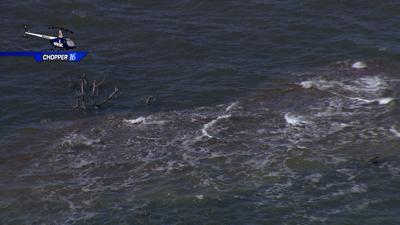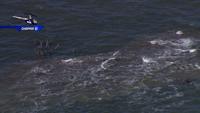DORCHESTER COUNTY, MD - An island in Dorchester County that has slowly been submerged by Chesapeake Bay waters over the years could soon be revived. The U.S. Army Corps of Engineers has announced plans to restore more than 2,000 acres of James Island, which has been largely forgotten as erosion has gradually reduced its size.
James Island, which was once a peninsula connected to Taylor's Island, once spanned thousands of acres. However, since the 1850s, erosion has caused the island to nearly disappear beneath the bay's waters. Despite its nearly lost status, the Army Corps of Engineers is now spearheading efforts to bring the island back.
According to the Army Corps of Engineers, the restoration of James Island’s habitat is essential for the Chesapeake Bay ecosystem. "Restoration of island habitat is necessary and valuable to the Chesapeake Bay ecosystem. In the last 150 years, it has been estimated that 10,500 acres of this type of habitat have been lost in the middle-eastern portion of Chesapeake Bay," the Army Corps told WBOC.
The restoration plan involves a process of recycling dredged materials. Channels leading into the Port of Baltimore require regular dredging, and the material will be redirected to James Island to aid in the island’s restoration. "The project develops a long-term strategy for providing a viable placement alternative that meets the dredging needs of the Port of Baltimore while maximizing the use of dredged materials as a beneficial resource," the Corps said. "Dredged materials will be sourced from the federally-maintained Chesapeake Bay Approach Channels and be used to restore wetland and upland island habitats. No material from the Baltimore Harbor will be used in this project."
The project focuses on restoring and expanding remote island habitats, creating hundreds of acres of wetland and terrestrial environments for fish, shellfish, reptiles, amphibians, birds, and mammals. David Brinker, an avian conservation ecologist for the Maryland Department of Natural Resources, explained that certain species will benefit quickly from the project. "Herons and egrets, the small ones, will return a little quicker because all we have to do is establish shrub habitat," he said.
The project will also support marine life. "The other big benefit is for fisheries because you're going to have salt marshes, and those are nurseries for small fish like mummichogs and silversides that are at the bottom of the food chain for the fish that are sport and commercial interest," Brinker added. "So it's creating more habitat to produce eventually more rockfish."
The restoration project is expected to be a long-term endeavor. The Army Corps of Engineers estimates the project will cost $3.7 billion by its completion in 2068. The funding will be split between the U.S. Army Corps of Engineers, which will cover 65% of the cost, and the State of Maryland, which will contribute the remaining 35%.
Construction is slated to begin in early 2026, contingent upon the availability of federal funding from Congress.



